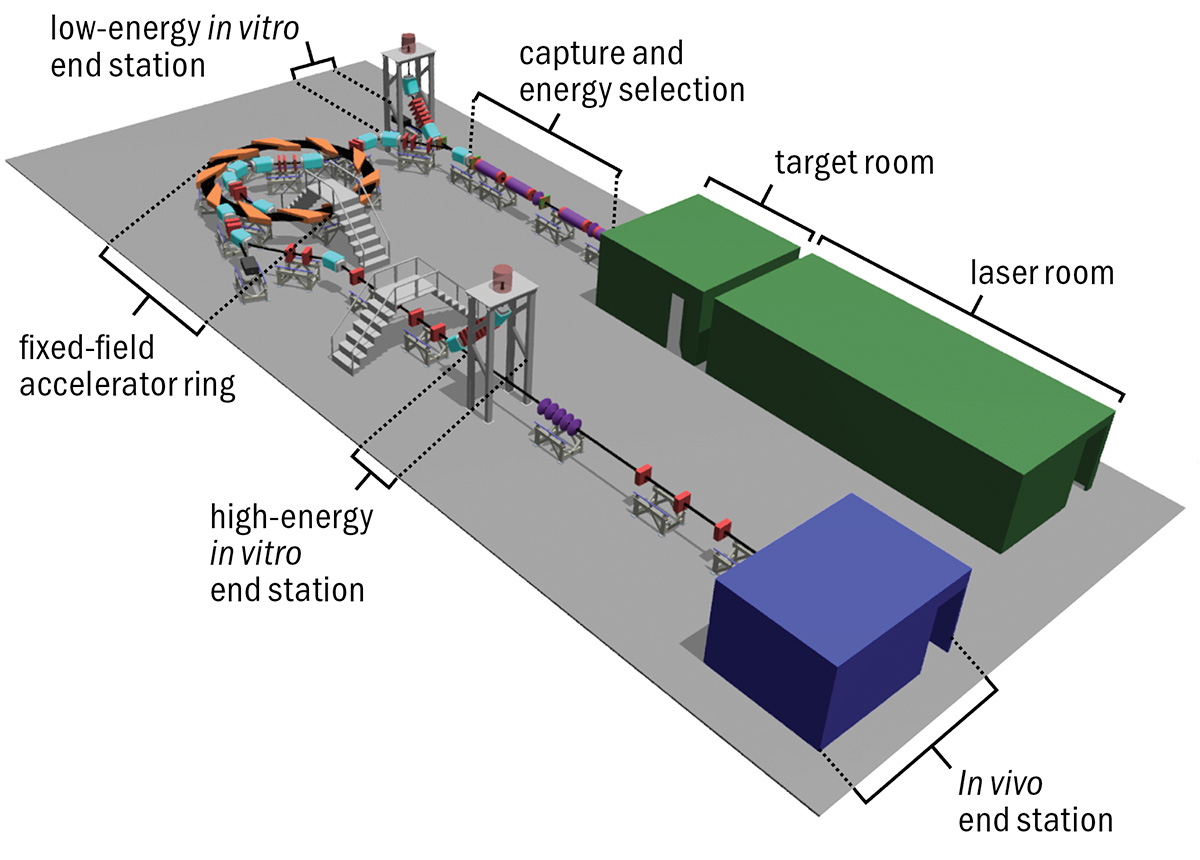The UK-led LhARA collaboration seeks to establish an entirely new technique for the automated delivery of personalized, precision, multi-ion Particle Beam Therapy (PBT), which will revolutionize cancer treatment. It will be a hybrid system consisting of a high-power pulsed laser of protons and ions, which are captured and formed into a beam by strong-focusing electron-plasma lenses. Rapid accelerations will be performed using a fixed-field alternating-gradient accelerator. If successful, this new technique will have the greatest impact on the most difficult cancers to cure while at the same time stimulating new research directions in fundamental physics, material science, and radiation biology.
The steps fixed by the Lhara collaboration are:
- Funding is sought from UKRI for an initial concept and risk-mitigation phase
- Funding for building the research facility in the UK
- R and D costs over ten years and development of the concept of the clinical facility
- Development of commercial product

Schematic of the LhARA facility. The first stage involves a pulsed laser incident on a target, with the emitted particles being captured by a Gabor lens, providing a facility suitable for studying the radiobiology of cell cultures. In the second stage, the low energy beam from the first stage is accelerated using a fixed-field, alternating gradient accelerator (FFA), to energies suitable for small-animal radiobiology studies. (SOURCE: CERN Archive)
PPD INVOLVEMENT
 PPD is currently involved in the development of instrumentation for the LhARA beamline itself and also for the experimental end stations, undergoing measurements of the beam profile, energy and intensity for both end stations, with the low-energy beamline being particularly challenging, needing very low mass or non-intercepting measurements. All these techniques will be synergistic with the upgrade of the ISIS spallation neutron source at RAL and with the accelerator-driven reactor at the KURNS laboratory in Kyoto. The ultimate goal of the instrumentation development for LhARA is to measure beam parameters in real-time, in such a way that the accelerator chain is continually tuned to deliver the desired dose, over the required area and at the correct tissue depth.
PPD is currently involved in the development of instrumentation for the LhARA beamline itself and also for the experimental end stations, undergoing measurements of the beam profile, energy and intensity for both end stations, with the low-energy beamline being particularly challenging, needing very low mass or non-intercepting measurements. All these techniques will be synergistic with the upgrade of the ISIS spallation neutron source at RAL and with the accelerator-driven reactor at the KURNS laboratory in Kyoto. The ultimate goal of the instrumentation development for LhARA is to measure beam parameters in real-time, in such a way that the accelerator chain is continually tuned to deliver the desired dose, over the required area and at the correct tissue depth.
